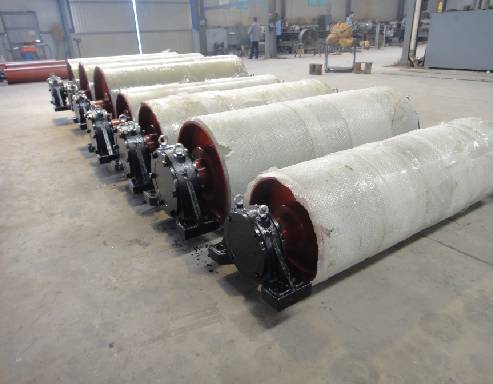 Afrikaans
Afrikaans  Albanian
Albanian  Amharic
Amharic  Arabic
Arabic  Armenian
Armenian  Azerbaijani
Azerbaijani  Basque
Basque  Belarusian
Belarusian  Bengali
Bengali  Bosnian
Bosnian  Bulgarian
Bulgarian  Catalan
Catalan  Cebuano
Cebuano  Corsican
Corsican  Croatian
Croatian  Czech
Czech  Danish
Danish  Dutch
Dutch  English
English  Esperanto
Esperanto  Estonian
Estonian  Finnish
Finnish  French
French  Frisian
Frisian  Galician
Galician  Georgian
Georgian  German
German  Greek
Greek  Gujarati
Gujarati  Haitian Creole
Haitian Creole  hausa
hausa  hawaiian
hawaiian  Hebrew
Hebrew  Hindi
Hindi  Miao
Miao  Hungarian
Hungarian  Icelandic
Icelandic  igbo
igbo  Indonesian
Indonesian  irish
irish  Italian
Italian  Japanese
Japanese  Javanese
Javanese  Kannada
Kannada  kazakh
kazakh  Khmer
Khmer  Rwandese
Rwandese  Korean
Korean  Kurdish
Kurdish  Kyrgyz
Kyrgyz  Lao
Lao  Latin
Latin  Latvian
Latvian  Lithuanian
Lithuanian  Luxembourgish
Luxembourgish  Macedonian
Macedonian  Malgashi
Malgashi  Malay
Malay  Malayalam
Malayalam  Maltese
Maltese  Maori
Maori  Marathi
Marathi  Mongolian
Mongolian  Myanmar
Myanmar  Nepali
Nepali  Norwegian
Norwegian  Norwegian
Norwegian  Occitan
Occitan  Pashto
Pashto  Persian
Persian  Polish
Polish  Portuguese
Portuguese  Punjabi
Punjabi  Romanian
Romanian  Russian
Russian  Samoan
Samoan  Scottish Gaelic
Scottish Gaelic  Serbian
Serbian  Sesotho
Sesotho  Shona
Shona  Sindhi
Sindhi  Sinhala
Sinhala  Slovak
Slovak  Slovenian
Slovenian  Somali
Somali  Spanish
Spanish  Sundanese
Sundanese  Swahili
Swahili  Swedish
Swedish  Tagalog
Tagalog  Tajik
Tajik  Tamil
Tamil  Tatar
Tatar  Telugu
Telugu  Thai
Thai  Turkish
Turkish  Turkmen
Turkmen  Ukrainian
Ukrainian  Urdu
Urdu  Uighur
Uighur  Uzbek
Uzbek  Vietnamese
Vietnamese  Welsh
Welsh  Bantu
Bantu  Yiddish
Yiddish  Yoruba
Yoruba  Zulu
Zulu Durable Rollers for Heavy-Duty Conveyor Belt Applications and Solutions
Heavy Duty Conveyor Belt Rollers Essential Components for Efficient Material Handling
In the realm of industrial operations, the efficiency of material handling systems can significantly impact productivity and operational costs. Among the critical components of these systems are heavy duty conveyor belt rollers. These rollers are indispensable for ensuring smooth and reliable movement of materials, thereby enhancing the overall performance of conveyor systems.
Understanding Conveyor Belt Rollers
Conveyor belt rollers are cylindrical components that facilitate the movement of conveyor belts. They support the belt's weight and load while enabling smooth and continuous motion. Heavy duty rollers are specifically designed to withstand the rigors of demanding industrial environments where high loads, heavy materials, and continuous operation are the norms.
These rollers are typically made from robust materials such as steel, which provides durability and strength. They can also be coated with various materials to enhance performance, longevity, and resistance to wear and tear. Heavy duty rollers are essential in industries such as mining, manufacturing, logistics, and warehousing, where they play a vital role in transporting heavy goods and materials over long distances.
Types of Heavy Duty Conveyor Belt Rollers
1. Idler Rollers Idler rollers are used to support the conveyor belt and maintain its tension. They are usually positioned along the conveyor system and can be found in various configurations, including snub, return, and guide idlers, to accommodate different operational needs.
2. Drive Rollers These rollers are connected to the drive mechanism of the conveyor system and are responsible for propelling the belt forward. They are typically equipped with a motor that provides the necessary power to move the heavy loads efficiently.
3. Return Rollers Positioned underneath the conveyor belt, return rollers assist in guiding the belt back to its starting point. They help reduce friction and wear on the belt, thereby prolonging its lifespan.
4. Impact Rollers Designed to absorb the impact of heavy loads, impact rollers are placed at loading points to cushion the material being transported. This capability helps prevent damage to both the belt and the structure of the conveyor system.
heavy duty conveyor belt rollers

Advantages of Heavy Duty Conveyor Belt Rollers
Heavy duty conveyor belt rollers offer numerous benefits that contribute to more efficient material handling processes
1. Increased Load Capacity These rollers are engineered to support substantial weights, allowing for the transportation of bulky materials without the risk of roller failure.
2. Reduced Maintenance Costs By using durable materials and engineering innovative designs, heavy duty rollers require less frequent replacement and maintenance, which translates to lower operational costs.
3. Enhanced Reliability With their robust construction, heavy duty rollers minimize the risk of breakdowns and interruptions in the material handling process, ensuring that systems operate smoothly.
4. Improved Safety Reliable conveyor systems reduce the likelihood of accidents caused by equipment failures. This improves workplace safety for employees interacting with the conveyor systems.
5. Versatility Heavy duty rollers can be adapted to various conveyor configurations and are suitable for diverse applications, making them an essential component across various industries.
Conclusion
The importance of heavy duty conveyor belt rollers in industrial material handling cannot be overstated. Their ability to support large loads while ensuring smooth belt movement is crucial for operational efficiency. As industries continue to evolve, the demand for reliable and durable conveyor systems will only grow. Investing in high-quality heavy duty rollers not only enhances the performance of conveyor systems but also contributes to improved safety and cost-effectiveness in operations.
In summary, understanding the significance of these components can aid businesses in making informed decisions about their material handling equipment, ultimately driving productivity and success in an increasingly competitive market.
-
Trusted Conveyor Solutions from Leading Conveyor Idler Roller ManufacturersNewsJun.27,2025
-
Reliable Return Idler Solutions for Efficient Belt Conveyor SystemsNewsJun.27,2025
-
Precision Conveyor Accessories for Streamlined Material HandlingNewsJun.27,2025
-
High-Quality Belt Conveyor Idler Solutions for Efficient Material HandlingNewsJun.27,2025
-
High-Performance Belt Conveyor Pulleys for Reliable Material HandlingNewsJun.27,2025
-
Enhancing Material Handling EfficiencyNewsJun.27,2025





























